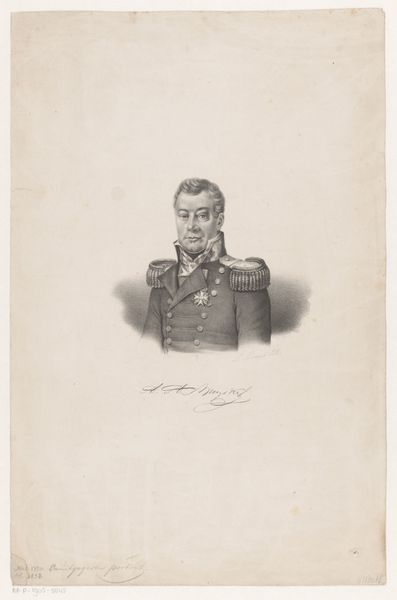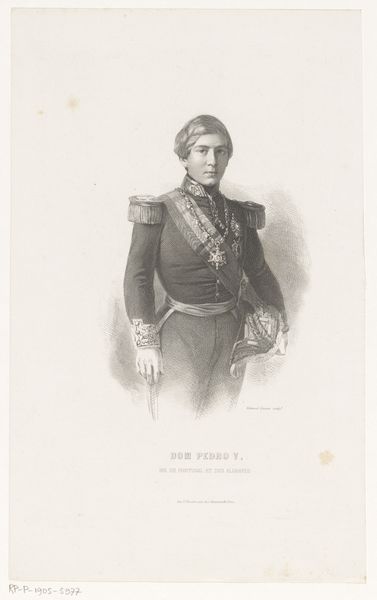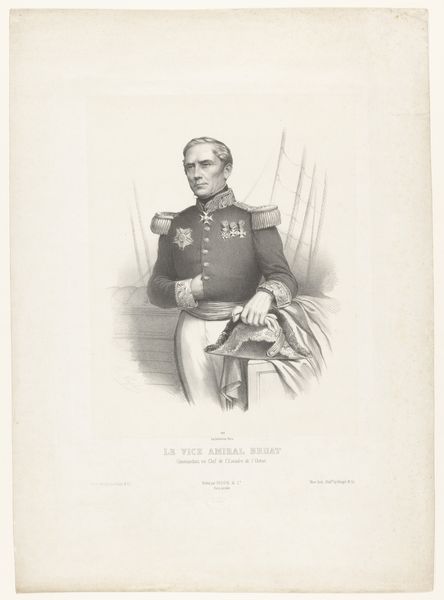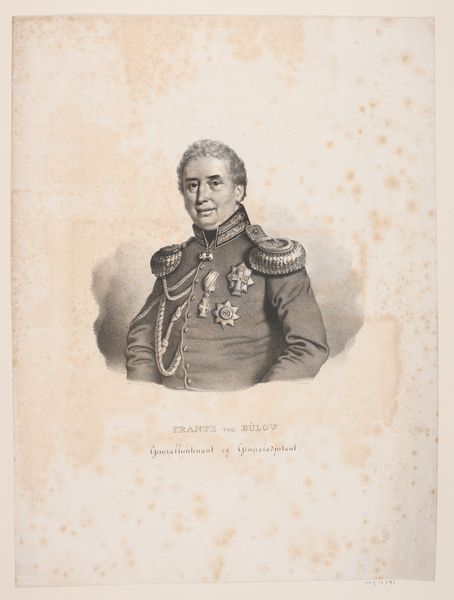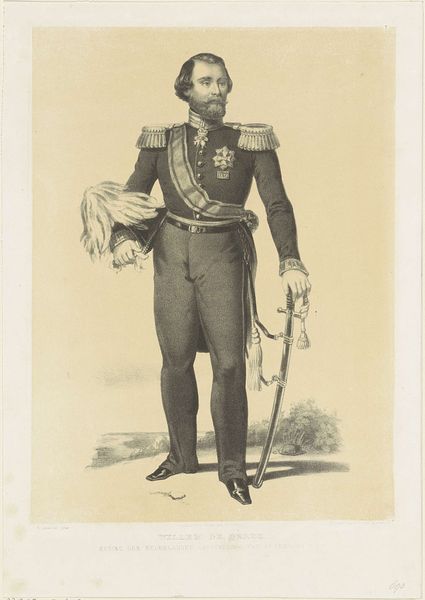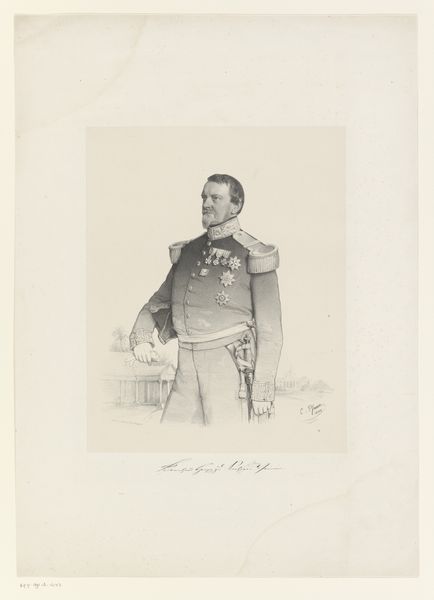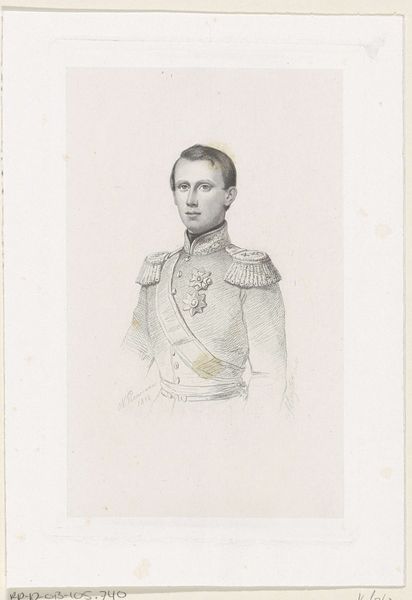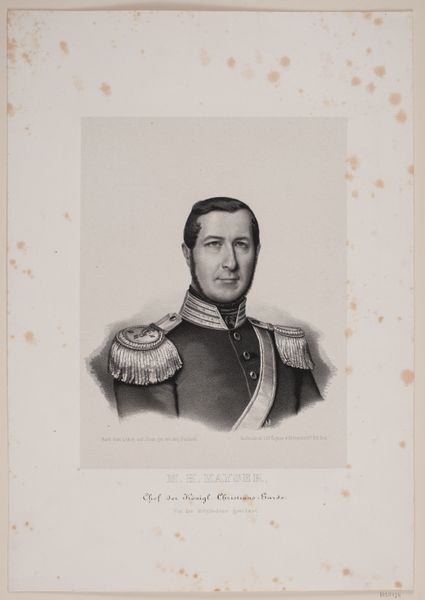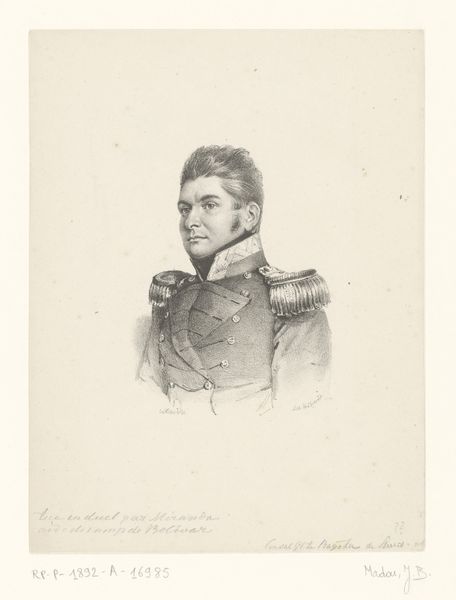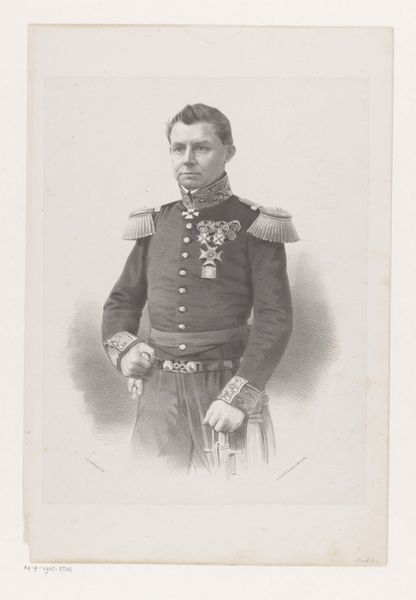
print, engraving
#
portrait
# print
#
historical fashion
#
history-painting
#
academic-art
#
engraving
#
realism
Dimensions: height 555 mm, width 405 mm
Copyright: Rijks Museum: Open Domain
Editor: This is “Portret van Charles Eduard van Heerdt,” an engraving from somewhere between 1851 and 1855, by Johan Hendrik Hoffmeister. It has this very formal, almost severe feel to it. It is full-length portrait, and the detailing of his uniform is pretty incredible. What strikes you most when you look at it? Art Historian: I’m immediately drawn to the visual language of power it employs. Think about all those symbols. His military attire speaks volumes: epaulettes, medals, the cut of the uniform itself. It is a careful construction of authority. It evokes similar displays of regalia in other prints from the 19th century. What do these elements say about Dutch society at the time? Editor: That's a good point, they show prestige and status. Is the sword he's holding just another symbol, or does it have deeper connotations? Art Historian: Oh, it definitely has multiple layers! A sword signifies military leadership, yes. But it's also an emblem of justice, and even chivalry. Notice how he's holding it rather than wielding it, suggesting control and restraint rather than aggression. Also, the arrangement of all those decorations must surely indicate that his lineage or connections granted the original gentleman this status, reinforcing inherited status in the Netherlands. Does the almost photorealistic depiction undermine the symbols for you, making them less mythic or archetypal? Editor: Maybe a little. But thinking about the context helps make those connections more vivid for me. Thank you, this has helped me notice a lot of subtle symbolism that I originally overlooked! Art Historian: The power of symbols persists even in seemingly objective portraits, revealing layers of social meaning, which helps us understand not only the art but the people that valued it.
Comments
No comments
Be the first to comment and join the conversation on the ultimate creative platform.



